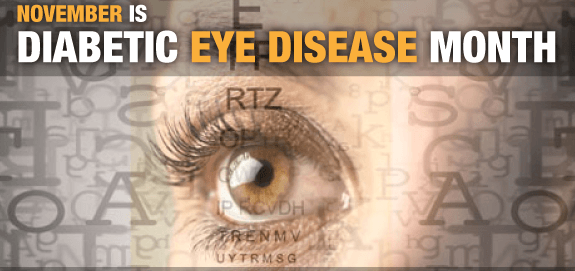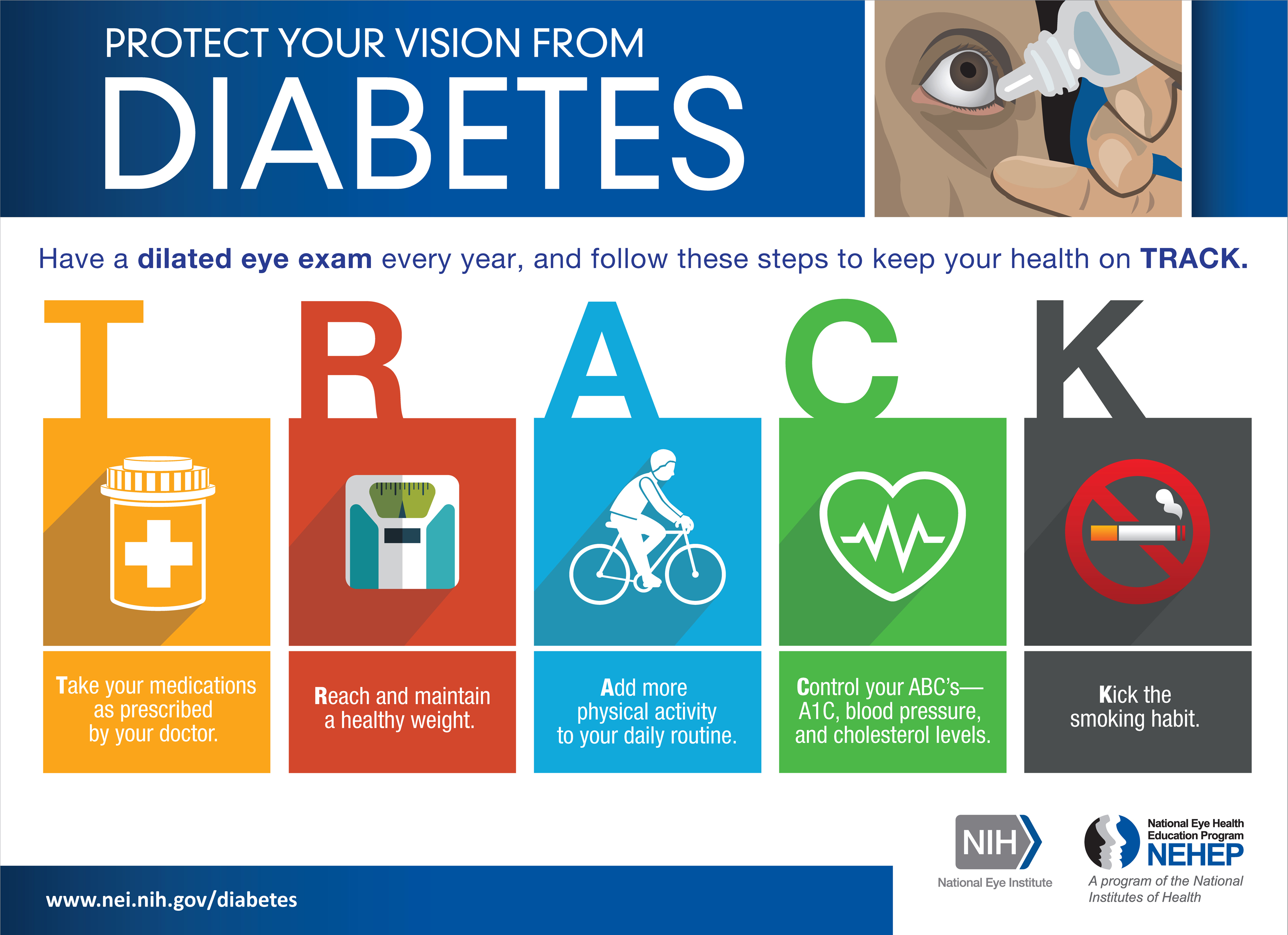
In keeping with the National Diabetes Awareness Month theme, it makes sense that November is also National Diabetic Eye Disease Month. From our local UNC Hospital:
According to the American Academy of Ophthalmology, approximately 29 million Americans age 20 or older have diabetes, but almost one-third don’t know they have the disease and are at risk for vision loss and other health problems.
Early symptoms are often unnoticed, therefore vision may not be affected until the disease is severe and less easily treated.
Diabetic eye disease, a group of eye problems that affects those with diabetes, includes diabetic retinopathy, cataracts and glaucoma. The most common of these is diabetic retinopathy, which affects 5.3 million Americans age 18 and older.

From friendsforsight.org:
Diabetes can lead to a wide variety health complications, including heart disease, nerve damage, stroke, kidney disease, and vision loss. In fact, diabetes is the leading cause of blindness among working-age Americans. Diabetes is a risk factor for developing glaucoma, as well as for developing cataracts, but the most common and debilitating vision problem experienced by diabetics is diabetic retinopathy.
Today 3.6 million Americans ages 40 and older suffer from the diabetic retinopathy. During Diabetic Eye Disease Month, Friends for Sight encourages individuals with diabetes to take preventative measures and protect their eyes from the devastating effects of diabetes.

From caringnews.com:
What is diabetic eye disease?
Diabetic eye disease is a group of eye problems affecting people who have diabetes. This includes cataracts and glaucoma, but the most common type is diabetic retinopathy. Diabetic retinopathy is the leading cause of blindness in adults 20 – 74 years of age. In this condition, the high blood sugar levels associated with diabetes cause the blood vessels of the retina to swell, leak fluid or become blocked. Sometimes abnormal new blood vessels grow on the retina. Diabetic retinopathy can result in severe vision loss.
Reducing the risk of diabetic eye disease
The good news is that people with diabetes can lower their risk of developing diabetic eye disease. The National Eye Institute (NEI) urges people with diabetes to keep their health on TRACK:
Take your medications.
Reach and maintain a healthy weight.
Add physical activity to your daily routine.
Control your blood sugar, blood pressure and cholesterol.
Kick the smoking habit.Diagnosis and treatment
Prevention is the best step to protect against the damage caused by diabetic eye disease. But although diabetic eye disease cannot be cured, ophthalmologists offer a number of treatments to reduce or halt the loss of vision. This can only happen if the problem is detected early enough—and unfortunately, patients may not notice that anything is amiss during the early stages. So regular eye exams are extra-important for people with diabetes.
Says the NEI’s Dr. Paul A. Sieving, “The longer a person has diabetes, the greater his or her risk of developing diabetic eye disease. If you have diabetes, be sure to have a comprehensive dilated eye exam at least once a year. Diabetic eye disease often has no early warning signs, but can be detected early and treated before vision loss occurs. Don’t wait until you notice an eye problem to have a dilated eye exam, because vision that is lost often cannot be restored.”
